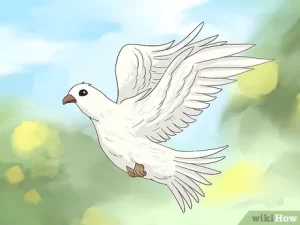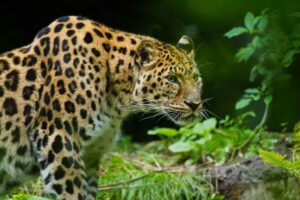Introduction
Birds, with their diverse shapes, colors, and behaviors, have long captivated the human imagination. While many species are celebrated for their beauty and elegance, there exists a curiosity about the concept of avian “ugliness.” In this article, we delve into the intriguing world of unconventional bird appearances, exploring contenders for the title of the world’s ugliest bird and examining the deeper significance of such assessments.
The Search for the Ugliest Bird
Criteria for Assessing Bird Appearance
Assessing bird beauty is a subjective endeavor influenced by cultural and societal factors. Physical features such as plumage coloration, body proportions, and facial expressions are often scrutinized in determining avian aesthetics. However, beauty standards vary widely among individuals and across different cultures, leading to diverse perceptions of bird attractiveness.
Candidates for the Title of “Ugliest Bird”
Several bird species have been nominated for the title of the world’s ugliest bird, each possessing unique and unconventional physical attributes. Among the contenders are the Marabou Stork, known for its featherless head and hunched posture; the Shoebill, with its massive shoe-shaped bill and stoic demeanor; and the Northern Bald Ibis, distinguished by its bare facial skin and bald head. Despite their unconventional appearances, these birds play vital ecological roles and are worthy of appreciation beyond their outward aesthetics.
Comparative Analysis of Contenders
While these birds may be deemed “ugly” by human standards, they boast remarkable adaptations and evolutionary histories that contribute to their ecological success. The Marabou Stork’s scavenging habits help maintain ecosystem balance, while the Shoebill’s stealthy hunting tactics make it a formidable predator in wetland habitats. Similarly, the Northern Bald Ibis, though critically endangered, represents a relic of ancient times and serves as a symbol of conservation efforts to protect biodiversity.
The Marabou Stork: A Contender for the Title
Description of Physical Attributes
The Marabou Stork is characterized by its distinctive features, including a featherless head and neck, lanky frame, and large bill. While its appearance may be unconventional, it serves practical purposes, such as preventing bacterial growth in carrion feeding and reducing heat stress in hot climates. Despite its unique appearance, the Marabou Stork possesses a certain elegance in its adaptation to its environment.
Habitat and Behavior
Found throughout sub-Saharan Africa, the Marabou Stork thrives in a variety of habitats, from urban areas to savannas and wetlands. Its scavenging habits make it a valuable contributor to ecosystem health, as it helps recycle nutrients by consuming carrion and waste. Socially, Marabou Storks are often found in large flocks near water sources, where they engage in courtship displays and communal nesting.
Cultural Perceptions and Conservation Status
In African folklore and mythology, the Marabou Stork is often associated with death and misfortune, yet it also symbolizes resilience and adaptability. Despite its cultural significance, Marabou Storks face threats from habitat loss, pollution, and hunting. Conservation efforts aimed at protecting wetland habitats and raising awareness about the importance of these birds are crucial for their survival.
The Shoebill: A Fascination of Form and Function
Distinctive Physical Characteristics
The Shoebill’s most striking feature is its massive bill, which resembles a piece of footwear and serves as a formidable weapon for capturing prey. This unique adaptation allows Shoebills to hunt with precision in their preferred wetland habitats, where they stalk their prey with stealth and patience. Despite its formidable appearance, the Shoebill is a master of camouflage, blending seamlessly into its marshy surroundings.
Distribution and Behavior
Restricted to central and eastern Africa, the Shoebill is typically found in swamps, marshes, and flooded grasslands. Solitary by nature, Shoebills are skilled hunters, using their keen eyesight and powerful bill to catch fish, frogs, and small mammals. Conservation efforts are underway to protect Shoebill habitats and monitor population trends, as habitat loss and hunting pose significant threats to these enigmatic birds.
Appreciation and Conservation Efforts
In addition to its ecological importance, the Shoebill holds cultural significance in African folklore, where it is revered as a symbol of strength and mystery. Conservation organizations and research initiatives are working tirelessly to study and protect Shoebill populations, with a focus on habitat conservation, anti-poaching measures, and community outreach. By raising awareness about the Shoebill’s plight, conservationists hope to secure a brighter future for this iconic species.
The Northern Bald Ibis: A Relic of Ancient Times
Unusual Appearance and Historical Significance
The Northern Bald Ibis is instantly recognizable by its bald facial skin and bare head, giving it a distinctive appearance unlike any other bird. Historically, the Northern Bald Ibis ranged across Europe, North Africa, and the Middle East, where it held cultural and religious significance for ancient civilizations. Today, however, the Northern Bald Ibis is critically endangered, with only a few remaining populations scattered across its former range.
Ecological Role and Behavior
Despite its unusual appearance, the Northern Bald Ibis plays a vital ecological role as a seed disperser and indicator species for wetland health. Breeding colonies are typically found in cliffside habitats, where they build nests from mud and vegetation. During the breeding season, Northern Bald Ibises form monogamous pairs and engage in elaborate courtship displays, including synchronized flights and vocalizations.
Conservation Challenges and Future Outlook
Habitat loss, hunting, and disturbance from human activities have contributed to the decline of Northern Bald Ibis populations. Conservation efforts, including captive breeding and reintroduction programs, are underway to bolster dwindling populations and restore their former range. International cooperation and community involvement are essential for the success of these efforts, as the survival of the Northern Bald Ibis depends on collective action to protect its remaining habitats and address ongoing threats.


